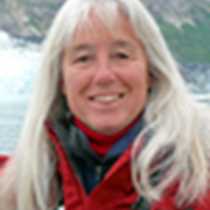The forest has an amazing way of cycling nutrients from the canopy to the forest floor and back up again to sustain a multitude of organisms that are interdependent and interconnected. Nitrogen-fixing lichens fall from the tops of the trees to the ground to release nutrients into the soil, which are in turn taken up by trees and returned to the canopy. Fungi simultaneously consume, strengthen, and nourish mighty trees. Salmon bring nutrients back from the productive ocean to feed the next generation and maintain dynamic equilibrium in the ecosystem. Fallen trees support more life in their death than they did while alive. Many of these intertwined existences are neither known nor understood. The cycle of life, death, decay, and rebirth continues. Competition is fierce. Only those supremely adapted to their environment will prevail.
The Sea Lion, like some whales and birds, will be heading south now, making a migration to warmer climes, as we cannot last the winter here. We have completed part of a continuing cycle. We look forward to new and different experiences. But we will return to Alaska, like the others, refreshed and rejuvenated, eager to see what another season will bring.




